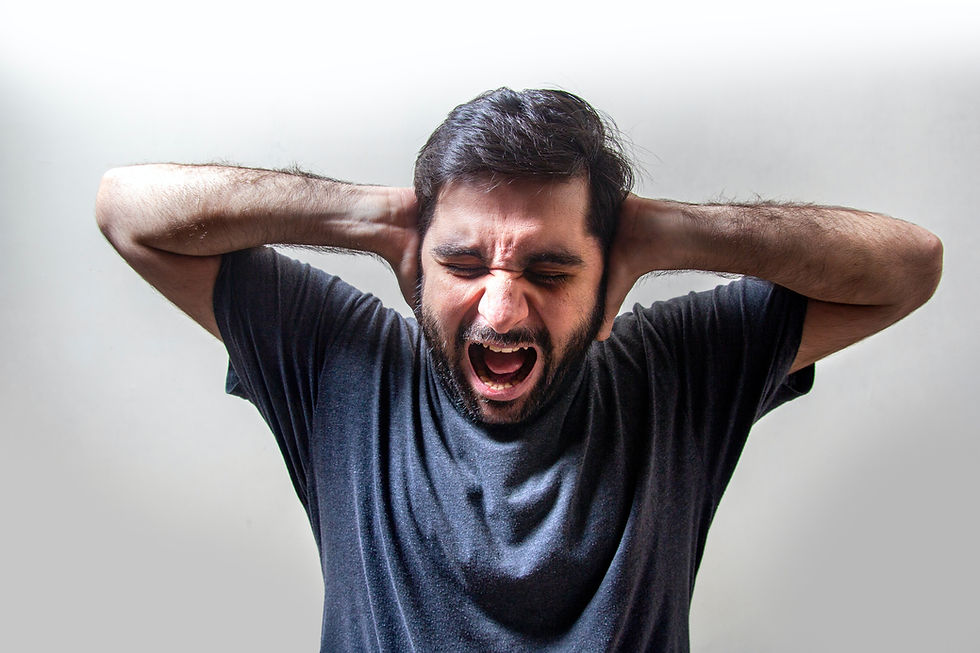Why We Should Pay Attention to Our Breathing
- May 2, 2023
- 4 min read
In the words of my great Kundalini teacher, Mahadev Singh, "From the first breath to the last gasp, life is nothing but one long story of continuous breathing."

Breathing is automatic, and therefore easy to take for granted or overlook. Yet, if we cease to breathe, we cease to live. Breathing is our very essence.
Another of my yoga teachers, Abhaya Geyer, repeatedly said in her classes, "The quality of our breath is the quality of our life."
This is why Yogis are concerned with breathing practices. Learning to breathe properly enhances every aspect of living.
When the lungs don't fully expand and contract, physiological processes that are the catalyst for the gas exchanges between the blood and body cells don't occur. Unconscious breathing only brings in around 500 milliliters of air into the lungs, with approximately twenty percent of that remaining unused in the trachea and bronchi. Without breathing completely, oxygen is unable to leave the blood and enter cells and carbon dioxide is unable to leave cells and enter the blood, resulting in the body running on blood that hasn't been purified. This leaves us feeling dull, stagnant, and unwell. Eventually, the entire physical body and organs will suffer. Breathing deeply stimulates the abdominal organs and provides the oxygen necessary for our digestive system to work properly. Incomplete breathing affects our nervous system, as well. Without proper breathing, we have a difficult time with our nerve currents, thus, our very functionality.
What is proper breathing and how do we breathe properly?
Yoga teaches us that there are four types of breathing:
Low Breathing
Middle Breathing
High Breathing
Yogic Complete Breathing
Low breathing, or abdominal breathing, concerns the expansion of the belly on the inhale and the retraction of the belly on the exhale. This flow of air into the depths of the lungs opens the rib cage, allowing the lungs to fully expand, moving the diaphragm down to push on the abdominal organs and increasing the efficacy of gas exchange. Upon exhale, the diaphragm moves up and causes the chest cavity to contract. Low breathing provides the greatest amount of air to our body for the least muscular effort. Mastering proper abdominal breathing is the first step in breathing to the best of our abilities.
Middle breathing, also known as thoracic or rib breathing, is centered on the expansion and contraction of the rib cage. On the inhale, muscles attached to the ribs work together to expand the rib cage in all directions to draw air into the lungs. Exhalation relaxes the intercostal muscles, drawing the ribs down and in, and the lungs are compressed. As compared to low breathing, rib breathing requires a larger muscular effort in exchange for a reduction in quantity of breath and gas exchange. More than twenty percent of the population habituates thoracic breathing, as it tends to naturally present during increased physical activity and stressful, fearful, or emotionally charged situations. Mastery of middle breathing can, therefore, help to relieve strong emotions and tension.
The typical human only utilizes twenty-five percent of their lung capacity to breathe, only engaging the top part of the lungs, referred to as upper breathing, clavicular breathing, or collarbone breathing. Since such a small portion of the lungs is utilized during this type of breathing, it provides the least amount of air and the fewest benefits while requiring the greatest effort. This breathing is paradoxical, causing the ribs, collarbone, and shoulders to rise while the abdomen retracts and pushes the diaphragm up. Upon exhalation, the shoulders drop and the collarbones and ribs contract inward. Utilizing only upper breathing is known to lead to vocal cord and respiratory organ disease, as well as mouth breathing. We should always avoid mouth breathing and instead breathe through the nose in order to regulate air temperature as it goes into our lungs, filter impurities, humidify air, and help control brain temperature. Upper breathing should be reserved during yogic complete breathing as the final stage of rib cage expansion on the inhale and contraction on the exhale.
Yogic complete breathing combines low, middle, and high breathing into one flow. This type of breathing is the only breathing method that is conducive to maximized inhalation and exhalation of breath. This allows for utilization of the entire respiratory system, proper muscular function of the abdominal cavity, and maximum bodily benefit for the least amount of energy required. Yogic complete breathing can bring in up to five liters of air, allowing for complete gas exchanges and optimal bodily functioning. On the inhale, the belly expands as the lower lobes of the lungs are filled, then the ribs expand as the middle lobes are filled, and finally, the top lungs are filled. Exhale by reversing the process, emptying air from the clavicle area, followed by emptying air from the ribs, and then the lower lungs, with the navel retracting toward the spine. Be sure to exhale completely to allow room for the next full inhale.
Tying It All Together
Kundalini principle teaches us that each of us is born with a specific amount of prana, or life force. Our prana fluctuates with how our inner world (thoughts and emotions) intersects with our physical world (air, food, water, sun, and our environment). Humans receive the most prana through breathing air. This is why every Kundalini class includes pranayam! We must practice yogic complete breathing until it is deeply ingrained at a subconscious level. Breath controls every bodily function. Without breathing deeply, we have a shallow existence - mentally, physically, and spiritually. Live deeply and fully! Incorporate yogic complete breathing into your daily practice.



Opmerkingen